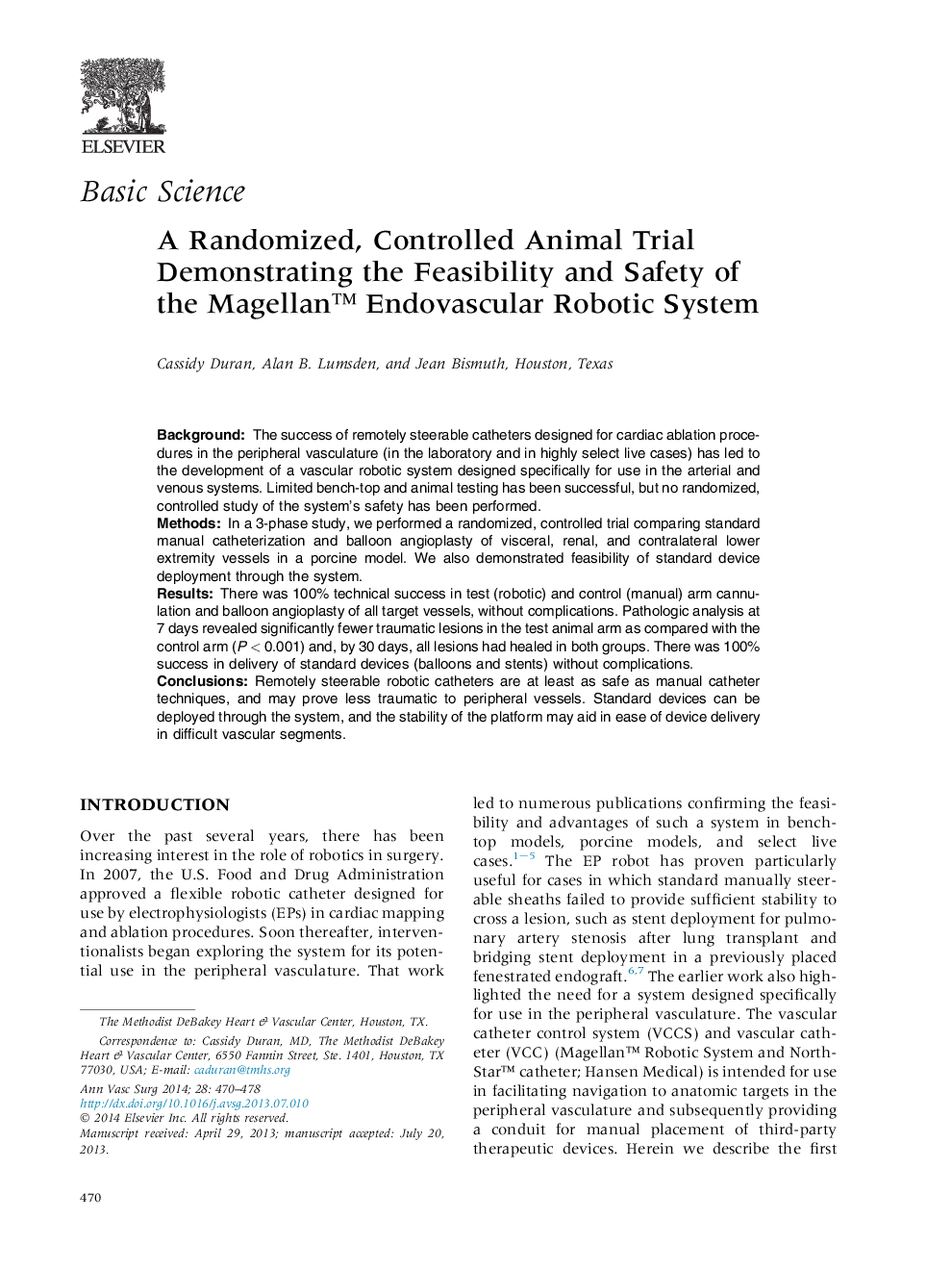| Article ID | Journal | Published Year | Pages | File Type |
|---|---|---|---|---|
| 2886345 | Annals of Vascular Surgery | 2014 | 9 Pages |
BackgroundThe success of remotely steerable catheters designed for cardiac ablation procedures in the peripheral vasculature (in the laboratory and in highly select live cases) has led to the development of a vascular robotic system designed specifically for use in the arterial and venous systems. Limited bench-top and animal testing has been successful, but no randomized, controlled study of the system’s safety has been performed.MethodsIn a 3-phase study, we performed a randomized, controlled trial comparing standard manual catheterization and balloon angioplasty of visceral, renal, and contralateral lower extremity vessels in a porcine model. We also demonstrated feasibility of standard device deployment through the system.ResultsThere was 100% technical success in test (robotic) and control (manual) arm cannulation and balloon angioplasty of all target vessels, without complications. Pathologic analysis at 7 days revealed significantly fewer traumatic lesions in the test animal arm as compared with the control arm (P < 0.001) and, by 30 days, all lesions had healed in both groups. There was 100% success in delivery of standard devices (balloons and stents) without complications.ConclusionsRemotely steerable robotic catheters are at least as safe as manual catheter techniques, and may prove less traumatic to peripheral vessels. Standard devices can be deployed through the system, and the stability of the platform may aid in ease of device delivery in difficult vascular segments.
